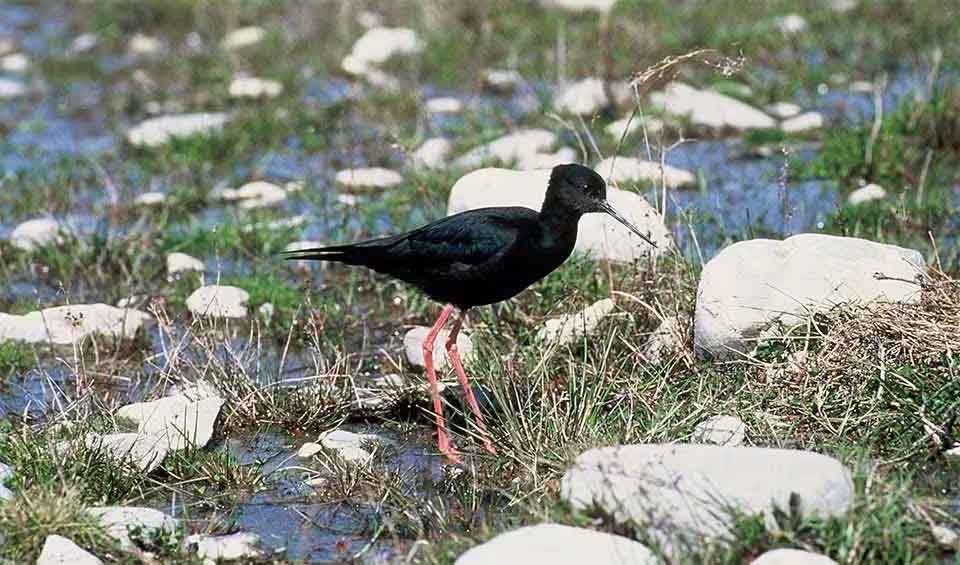Himantopus – Stilts
The thin needle-like bill is supported by solid head muscles allowing quick jaw movements to grip prey firmly
These birds are aptly named for their extremely long and slender legs, which are among the longest legs in proportion to the body size of any bird. The contrast of their large white bodies with striking black wings and long pink legs makes them easily identifiable and a sight to behold in their natural habitats.
Stilts are characterized by their straight or slightly upturned thin black bills, which are well-adapted to their feeding habits. These birds are often seen gracefully tip-toeing through shallow waters, using their long legs—which notably lack a hind toe—to wade while searching for food. This absence of a hind toe is a common trait among birds that have evolved primarily for wading rather than perching.
Their diet consists largely of aquatic invertebrates, which they capture with their long necks and precision bills. Stilts can feed from both the surface and beneath the water, employing a technique known as ‘pecking,’ where they snatch prey quickly, or ‘probing,’ where they insert their bill into the water to feel for prey.
When in flight, their long legs extend well beyond the tail, reminiscent of an airplane’s tail, providing balance and perhaps aiding in steering during flight. The delicate pink hue of their legs is due to a concentration of carotenoid pigments, which can be a sign of diet quality and overall health.
The black-winged stilt (Himantopus himantopus) is particularly well-known, and it exhibits slight sexual dimorphism in plumage color. While both males and females have the same stark black-and-white coloring, the female typically has a more brownish tinge to the black parts of her wings and back, whereas the male tends to have a more pronounced black coloration.
Species in this genus
Black stilt
One of the world’s rarest birds, with less than 200 individuals remaining in the wild
Black-winged stilt
Elegant long-legged wader, common almost worldwide



